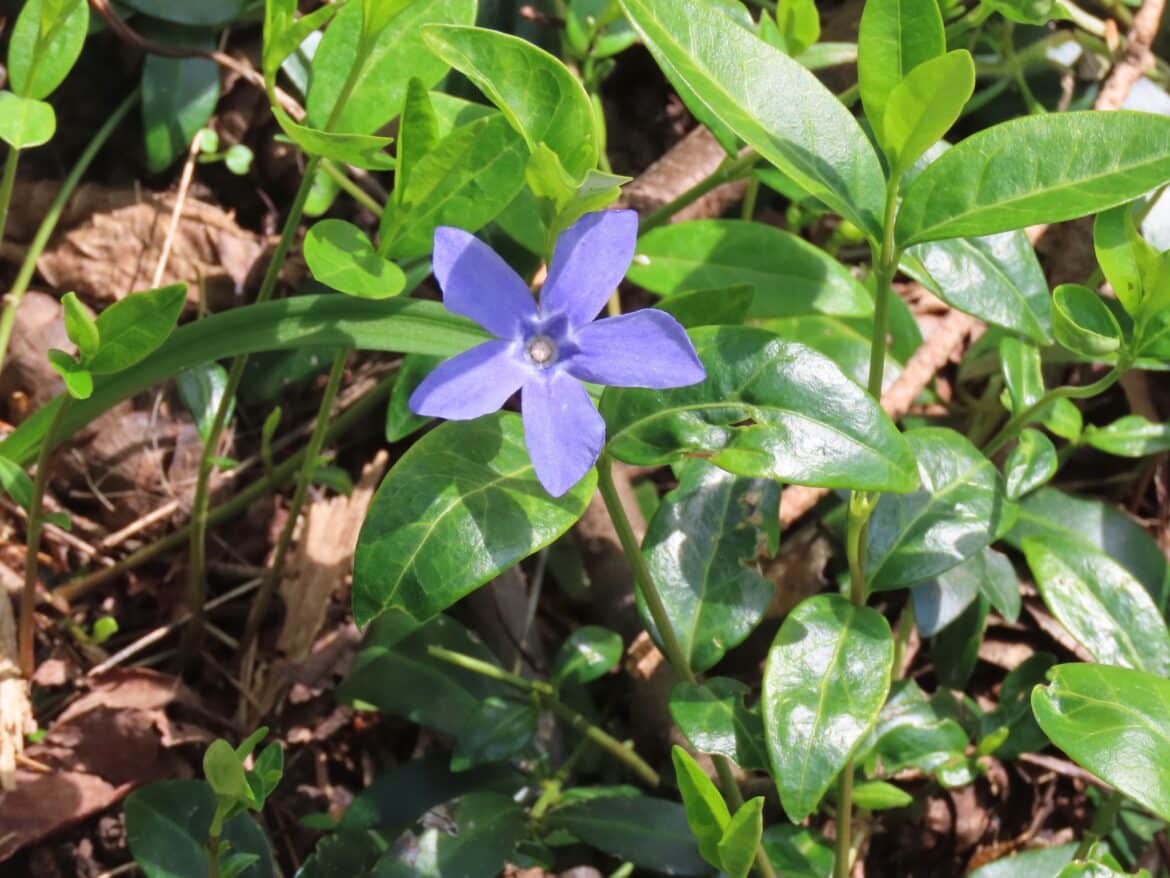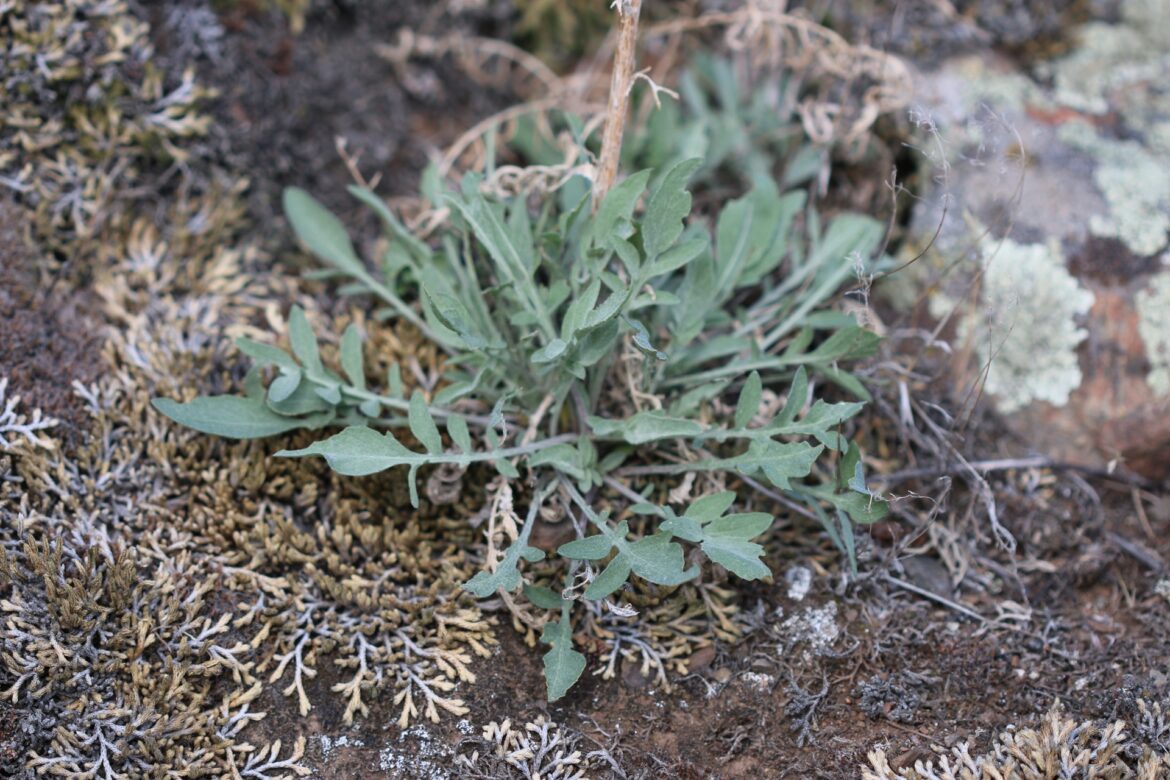By Lisa Houle | March 28, 2024
Temperatures are warming and the soil is awake with new life. It’s spring in B.C.! The greenery that greets us first, however, may not be the plants we are anticipating. While some of our native plants are still dormant, many invasive plants have already emerged. Getting an early start to the growing season is what helps these invasives outcompete our native plants.
ISCBC’s Learning Coordinator, Megan Blackmore, is on the lookout for plants on her daily walks. A Master Gardener and avid iNaturalist contributor, Megan is familiar with the buds and leaves of almost every plant she encounters. Recording her findings is important for community science.
“I see early emerging invasive species getting a head start, taking up space and resources in the habitats they invade,” said Megan. “They can shade out and compete with native seedlings making it harder for them to establish. The invasives can push native species out before they are big enough to be much competition to them.”
As plants emerge, it’s helpful to learn their identifying features.
“There are many invasive plants emerging across the different regions of B.C. Depending on your area, Common periwinkle (Vinca minor) may be in flower now on the Coast/Lower Mainland. And you may recognize the rosettes of Spotted knapweed (Centaurea stoebe) in the Interior, and Bull thistle (Cirsium vulgare) in Central/Northern B.C.,” said Megan.

Megan recommends checking ISCBC’s factsheets for information on specific plant removal and separating invasive plant waste from regular green waste.
“After removing invasive species from your garden, bag them and put them in the trash. They should not be composted because some invasive species have seeds or other plant parts that can survive the composting process,” she said.
Now that your growing area is prepped and free of invasive species, you’re ready to start planting. Creating a healthy living space starts with informed buying choices.

“What we grow in our gardens can have an impact on the surrounding environment. Growing invasive species can contribute to their spread even if you do not see it spreading within your yard,” said Megan. “Seeds can be carried out of your yard by wind or animals eating and dispersing the seeds. There are so many beautiful non-invasive plants that we can choose to grow instead!”
As a consumer, you can make your purchasing decisions count by choosing only non-invasive plants.
“Garden centers want to stock the plants that people will buy. If people are buying invasive species, it gives the impression that they are popular and wanted by their customers. If we ensure we only buy non-invasive plants, we can reduce the demand for invasive species in stores,” said Megan.

As the season progresses and your native and non-invasive plants are thriving, invasive plants will persistently pop up in your yard again. Dave Ralph, ISCBC’s Senior Manager of Operations, recommends inspecting and maintaining your yard regularly to ensure invasive plants are kept in check. Not only for your property, but for the health and safety of neighbouring properties as well.
“Some invasive plants can impact food crops and grazing pastures by competing for water, soil nutrients, and sunlight. These are essential elements for healthy crops, the lack of which results in reduced yield and quality and ultimately reduces their value,” said Dave. “In a time when people are concerned with food security, reducing competition from invasive plants gives crops a chance to produce at their best.”
If you are not sure which plants are considered invasive for your region, there is expert help available.
“Reaching out to your Regional Invasive Species Organizations (RISOs), local, regional and provincial governments, Land Managers in non-government organizations or conservancy organizations are good places to start,” said Dave.
If you do find a plant in your yard that is considered toxic, Dave recommends creating a barrier around it to restrict access to people and pets. Be sure to learn more about its toxic principle(s) before attempting any contact.
“Find out the best way to remove or control it, but do not risk exposure before knowing the proper way to manage it. Report toxic invasive species to your local RISO,” said Dave. “If it is an invasive and/or noxious toxic plant, report it to the provincial government on the Report Invasives App or their website.”
Maintaining a biodiverse yard helps protect against the harmful effects of invasive species. A little clean-up work now, mixed with selective plant choices and regular maintenance will ensure a healthy yard this gardening season.
Happy spring planting!
Lisa is a Communications and Outreach Coordinator at ISCBC. She values a diverse environment and connecting with others about environmental protection. In her spare time Lisa enjoys spending time at the ocean and beach combing for sea glass. You can reach Lisa at lhoule@bcinvasives.ca
Share





